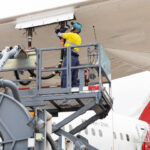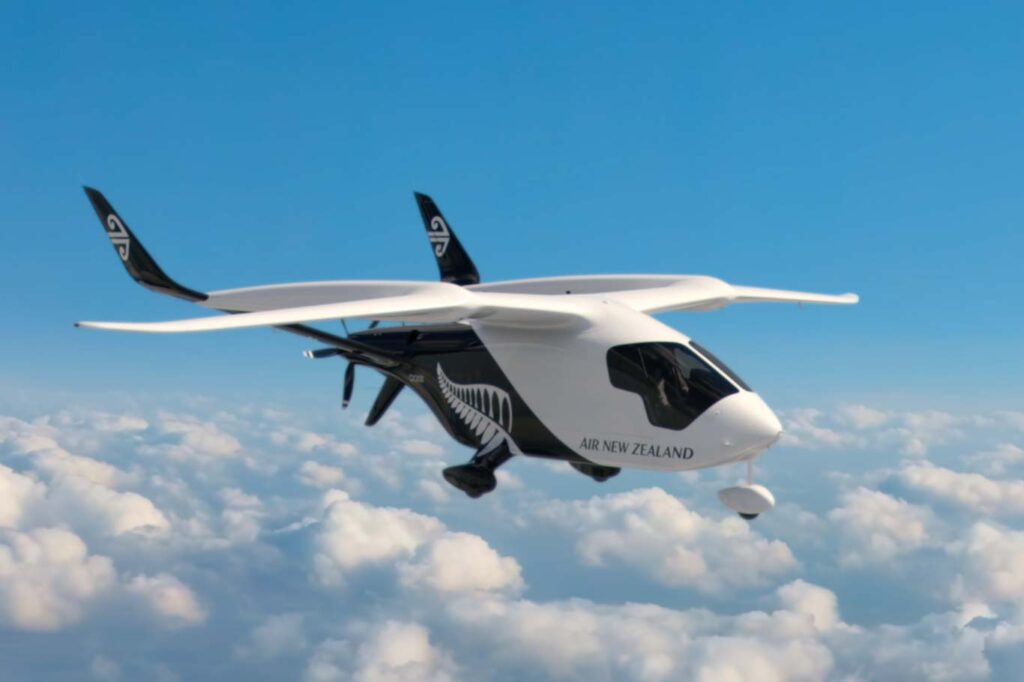Electric aviation has taken two steps forward but one step back, with Air New Zealand announcing it will introduce as many as 23 short-range electric aircraft from US-based BETA Technologies, and Europe’s EcoPulse hybrid-electric demonstrator aircraft performing its first multi-powered flight, both just days after Rolls-Royce announced plans to dispose of its electric aircraft propulsion division. After an 18-month assessment, Air New Zealand has chosen BETA’s electric-powered ALIA conventional take-off and landing aircraft (eCTOL) to operate from 2026, initially as a commercial demonstrator for short-range operations. The EcoPulse, developed jointly by Airbus, Safran and Daher, and powered by a primary gas turbine engine, then six electric propellers, operated for the first time in hybrid-electric mode during a 100-minute flight from Tarbes Airport in France. The announcements followed the decision of Rolls-Royce to exit electric propulsion as part of a group-wide restructure which includes increased focus on its jet engine business.
Air New Zealand has selected BETA’s ALIA conventional take-off and landing aircraft as part of its Mission Next Gen Aircraft programme following assessments of four new aircraft concepts, which also included the electric Eviation Alice, the hybrid-electric VoltAero Cassio and a hydrogen-powered Britten-Norman Islander from UK-based Cranfield Aerospace Solutions. The airline has placed an initial firm order for one BETA ALIA aircraft, with options for two more and rights for a further 20.
“This is a small but important step in a much larger journey for Air New Zealand,” said the airline’s CEO, Greg Foran. “We need to accelerate the pace of change in the technology, infrastructure, operations and regulation.
“While this aircraft will add to, not replace, our existing fleet, it is a catalyst for that change. By flying the ALIA, we hope to advance our knowledge and the transformation needed in the aviation system in Aotearoa [New Zealand] for us to fly larger, fleet-replacing, next-generation aircraft from 2030.” At that time, the airline plans to phase out its fleet of 23 conventionally powered Q300 turboprops.
Although the BETA ALIA is designed to carry up to five passengers and one pilot, the airline initially plans to partner with New Zealand Post to provide cargo-only services on a test route to be announced early next year, following expressions of interest from airports across the country, where regional aviation provides critical links between small communities, many of which are not well-served by road access.
The BETA ALIA eCTOL version has flown up to 480 kilometres in one test flight, well over Air New Zealand’s initial requirement to fly routes of up to 150 kilometres. In service, it would fly at altitudes of between 1,500 and 3,000 metres, and speeds of up to 270 kph, subject to regulatory approval by the New Zealand Civil Aviation Authority.
Kyle Clark, BETA’s CEO, said Air New Zealand was “hyper-focused on bringing technologies to scale as quickly as possible, both to meet its own ambitions to decarbonise and to change the broader aviation landscape. We are gratified by the airline’s confidence in our technology as a solution that will meet their operational needs and look forward to continuing to work hand-in-hand as we bring the ALIA to market for 2026.”
In France, the EcoPulse testbed aircraft, an adapted version of a Daher TBM airframe, performed the inaugural test flight with its six integrated electric thrusters, or e-Propellers, activated. It was powered by both a battery and a turbogenerator.
Three Safran propellers have been fitted to each wing, and aerodynamically tested since early this year, when two, then four, and finally all six were installed. Powered by the legacy turboprop engine in its nose, the aircraft has been progressively test flown to assess handling characteristics with the added inertia of wing propellers and pods.
The electric generator is powered by a gas turbine, provided by Safran, and a high-energy density power pack provided by Airbus.
Central to the system is a Power Distribution and Rectifier Unit (PDRU), again from Safran, to protect the high voltage network and distribute the electrical power, while the Airbus-designed battery pack is rated at 800 Volts DC and can generate up to 350 kilowatts of energy. Airbus also developed the flight control computer which enables the aircraft to manoeuvre using its e-Propellers.
“This is a major milestone for our industry,” said Airbus CTO Sabine Klauke, “and we’re proud to have powered the EcoPulse demonstrator first flight with our new battery systems. High energy density batteries will be necessary to reduce carbon emissions from aviation, whether for light aircraft, advanced air mobility, or large hybrid-electric aircraft. Projects like EcoPulse are key to accelerating progress in electric and hybrid-electric flight, and a cornerstone of our aim to decarbonise the aerospace industry as a whole.”
Eric Dalbiès, Safran’s CTO and EVP Strategy, said the EcoPulse test “confirmed that this disruptive propulsion system works in flight, which paves the way for more sustainable aviation. The lessons learned from upcoming flight tests will feed into our technology roadmap and strengthen our position as leader in future all-electric and hybrid-electric propulsive systems.”
And Daher CTO Pascal Laguerre said the partnership was “working to converge practical and significant know-how on design, certification and operation to shape our path towards more sustainable aircraft for the future.”
While these programmes progress, Rolls-Royce, during its 2023 Capital Markets Day, has revealed plans to sell its electric aviation propulsion division as part of a company-wide restructure. The unit is involved in producing powertrains for next-generation aircraft including air taxis and short-range commuter craft.
It will intensify its focus on engines for widebody commercial jets and business aircraft, while also progressing its UltraFan engine programme, which will be central to its plans to re-enter the narrowbody aircraft market.
“In Rolls-Royce electrical we are looking at options to exit in the short run or alternatively, for the right value, reduce our position to minority with an intention to exit fully in the mid-term,” the company said. “We believe, given the world-class capability we have built in Advanced Air Mobility, that this will represent good value to a third party and will allow us to focus on our core electrical engineering activities in Power Systems, Defence and Civil Aerospace.”
Image (Chris Tarpey): BETA’s ALIA eCTOL in Air New Zealand livery















More News & Features
Australia announces A$1.1bn incentive scheme to drive local production of low carbon fuels including SAF
COMMENTARY: China poised to evolve from rule-taker to rule-shaper at ICAO Assembly
COMMENTARY: Why China’s national carbon market is unlikely to include aviation in the near term
SAF production and procurement deals inked in China and other Asia regions
Air India signs MoU with IndianOil for SAF supply to meet country’s 2030 blending target
Singapore sets up collaborative initiative to support Asia-Pacific sustainable aviation